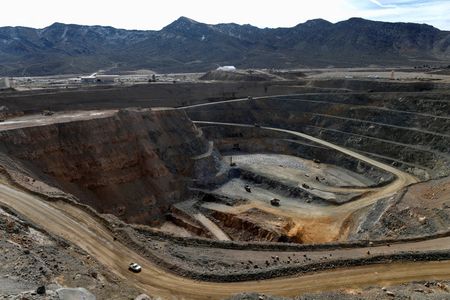By Ernest Scheyder
(Reuters) – It takes an average of nearly 29 years to build a new mine in the U.S., the second-longest in the world behind only Zambia, hampering Washington’s efforts to boost output of lithium, nickel and other metals for the energy transition, a report said on Thursday.
The report by consultancy S&P Global comes amid rising pressure on U.S. officials to streamline what is seen by mining companies and some policymakers as a confusing and lengthy process to obtain a mining permit that harms efforts to offset China’s near-total control of the critical minerals sector.
S&P studied 268 mining projects across the globe from when a metal deposit was first discovered until production began. The report found the development timeline in copper- and cobalt-rich Zambia to be the longest in the world at roughly 34 years, five years longer than the U.S.
Canada, Argentina and Mongolia – where Rio Tinto developed the Oyu Tolgoi copper project – rounded out the top five longest development periods.
Ghana, the Democratic Republic of Congo and Laos had some of the shortest development times in the world, at roughly 10 to 15 years, while Australia at 20 years was the best among countries most comparable to the U.S.
The report, which did not offer policy recommendations, was paid for in part by the National Mining Association, a U.S. industry trade group. S&P Global said the NMA did “not provide data or substantive input.”
The NMA is helping lead a campaign to convince Washington to revive the long-dormant U.S. Bureau of Mines, Reuters reported this month. The S&P report noted that Canada and Australia have federal-level mining offices.
Data on Rio and BHP’s Resolution Copper project in Arizona and Northern Dynasty’s Pebble copper and gold project in Alaska – neither of which are permitted – were included in the report, which assumed they would open by 2030. Both projects have faced Indigenous and environmental opposition that the report did not offer suggestions to overcome.
The report did not discuss how increased use of copper leaching by Freeport-McMoRan and others – processes that do not require new permits – could affect U.S. output of that key metal.
A high rate of litigation against U.S. mining projects, the report found, has dampened exploration budgets, with companies with projects in Canada and Australia spending 81% and 57% more, respectively, to find new deposits than those in the U.S. in the past 15 years.
That was despite the U.S. having more than twice the copper and lithium reserves and resources of those countries, S&P data show.
The 28-page report also found that, globally, gold mines are developed the fastest, at an average of 15.2 years, with nickel mines developing the slowest, at an average of 17.5 years.
(Reporting by Ernest Scheyder; Editing by Jamie Freed)





